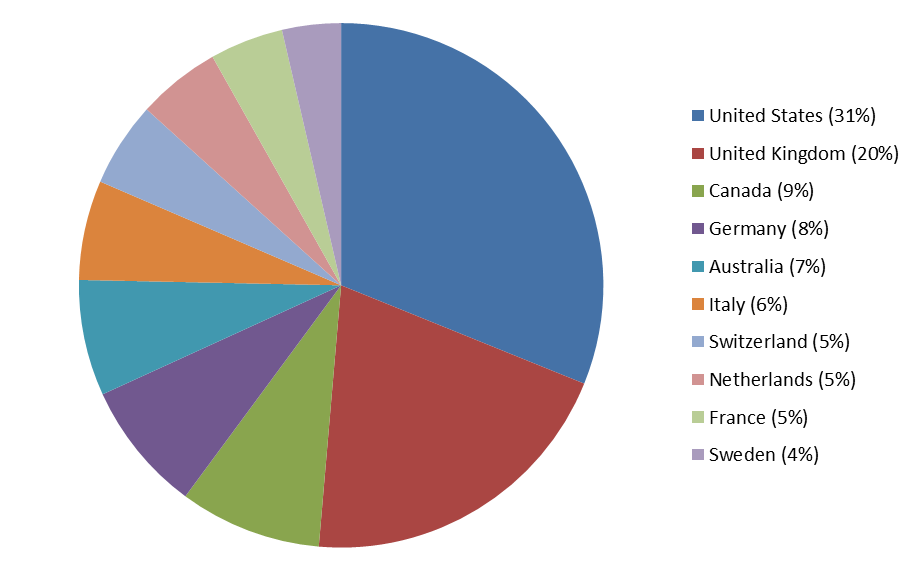 During this past week, the editors at BMC Medicine have been discussing how the journal has been changing over the last 10 years in terms of the impact of our articles, measured by various means. Of course, one of the best ways in which an article can impact on the scientific community is to drive other research within the field and to positively influence clinical practice.
During this past week, the editors at BMC Medicine have been discussing how the journal has been changing over the last 10 years in terms of the impact of our articles, measured by various means. Of course, one of the best ways in which an article can impact on the scientific community is to drive other research within the field and to positively influence clinical practice.
As an open access journal, we hope we have enabled authors to freely access articles that can facilitate their own research. As discussed in a previous blog, article and Twitter chat, open access can be considered particularly important in resource-limited settings.
Since the launch of the journal a decade ago, we have published around 900 articles. We thought it would be interesting to see which countries the majority of our authors come from. To continue with our ‘top 10’ theme, we asked ‘Which are the top 10 countries from which our authors publish?’
Using data from Scopus, and as depicted in figure 1, we found that the majority of our authors come from the U.S., accounting for just under one third of all authors within the top 10 countries. Authors from the U.K. are the second most prolific, and authors from Western European countries, Australia and Canada account for the rest of the top ten. This data comprises every author of each paper we have published, and therefore accounts for collaborations.

Figure 1: Distribution of authors from within the top ten countries that publish in BMC Medicine
The prolificacy of authors from these regions is perhaps not entirely surprising. In terms of global research output for medical papers (figure 2), the comparison with BMC Medicine authors shows a broadly similar trend, again using data from Scopus.

Figure 2: Global distribution of authors from within the top ten countries for research output
However, one noticeable exception, in terms of nations with an emerging research output, is China. Authors from China make the top ten in terms of global research output. They almost make the top ten in BMC Medicine, ranking at number 11, having, at present, just one article fewer than authors from Sweden. Interestingly, all of the articles we have published from authors based in China have been in the last five years.
China’s scientific research output has increased tremendously over the past decade. Specifically, there has been around a seven-fold increase in publications from 2002–2012 within the field of medical research. According to the most recent global research report from Science Watch, there has been substantial research output within the fields of immunology, microbiology, and molecular Biology & genetics.
To put this research output into global context, this has almost closed the gap in the number of publications between authors from China and the U.K. within the field of medical research (figure 3) using data from SJR, powered by Scopus.

Figure 3: Comparison of research output (1996-2012) in the field of medical research between U.K and China
Chinese research output is predicted to increase further in the next few years, and it is hoped that this will be matched with strong scientific impact of the papers. Here at BMC Medicine, we have certainly published high quality papers from authors based in China and hope to continue to do so.
Authors from India are also likely to become more prolific in the next few years. Globally, they rank 12th in terms of output for medical papers. India has a 1.8% share of global publications across medicine. Although this figure is relatively low, it appears to be set for an upward trend in the next decade due to rapid advances in higher education.
Comparing BMC Medicine trends to global trends provokes an interesting question. Given our open access model of publishing, should we have seen a slant towards authors based in ‘developing nations’ in BMC Medicine? We do not see such a trend, instead having rather a similar profile to the global research output pattern.
Of course the question is, should there even be such a slant? It is to be expected that those in developing nations are able to access open access papers more than those papers behind a subscription wall. However, this does not necessarily mean that these potential authors will then go on to submit their work in an open access venue, despite the fact that this mode of publishing means that their research can be accessible to their peers.
Therefore, we can only speculate the reasons for the current authorship patterns in BMC Medicine, which may in fact have little to do with open access. For example, the patterns may be due to the low research output of these countries in the first place, which can be caused by a variety of reasons. There is also the additional problem that some country-specific studies, such as those addressing global health issues, are primarily carried out by western researchers with an agenda still determined by western funding.
Compared with the traditional model of publishing, open access is still a relatively new model and the effect that it may have on research output is still unclear. We hope that the next decade will bring clarity regarding the effect of open access on the global research output.
Comments